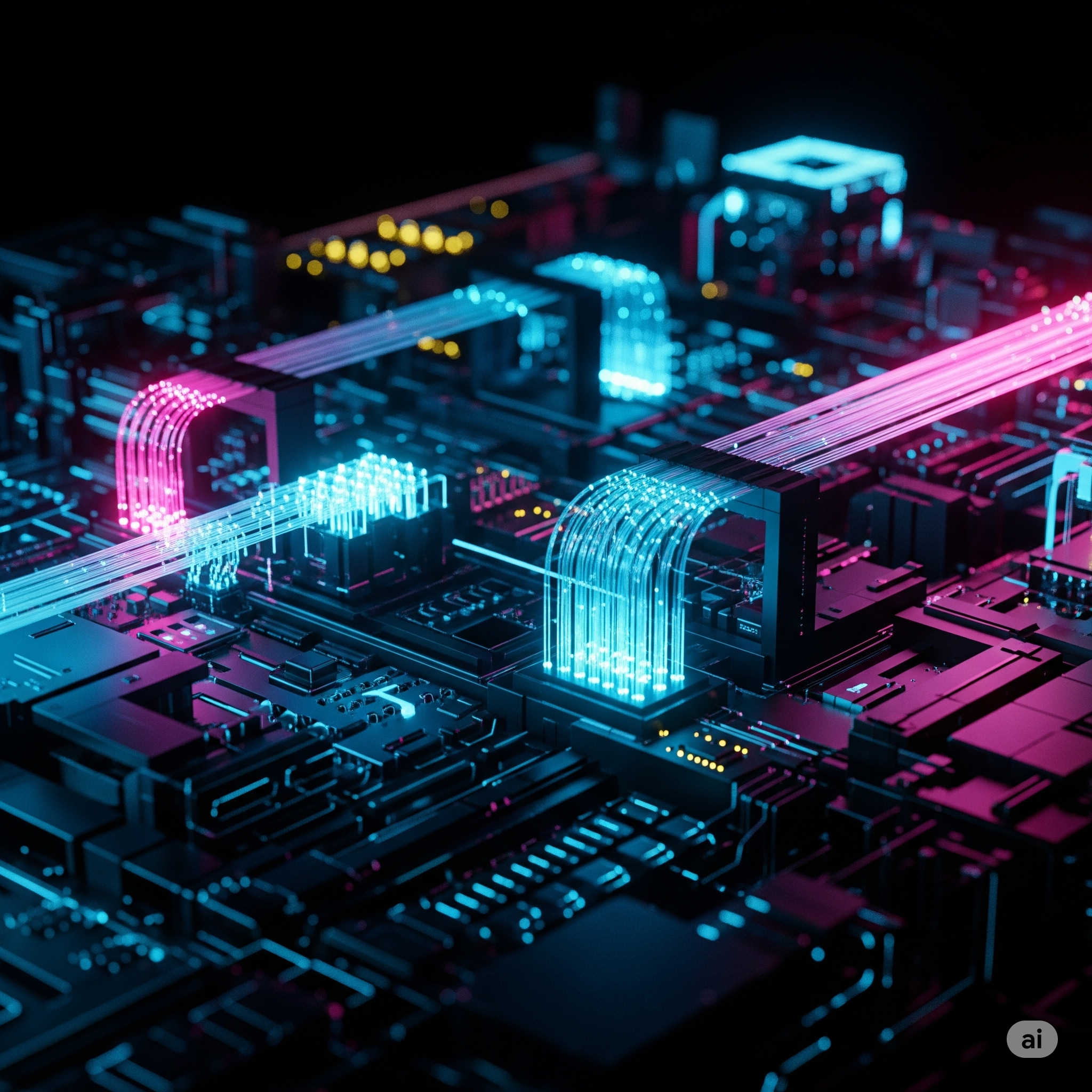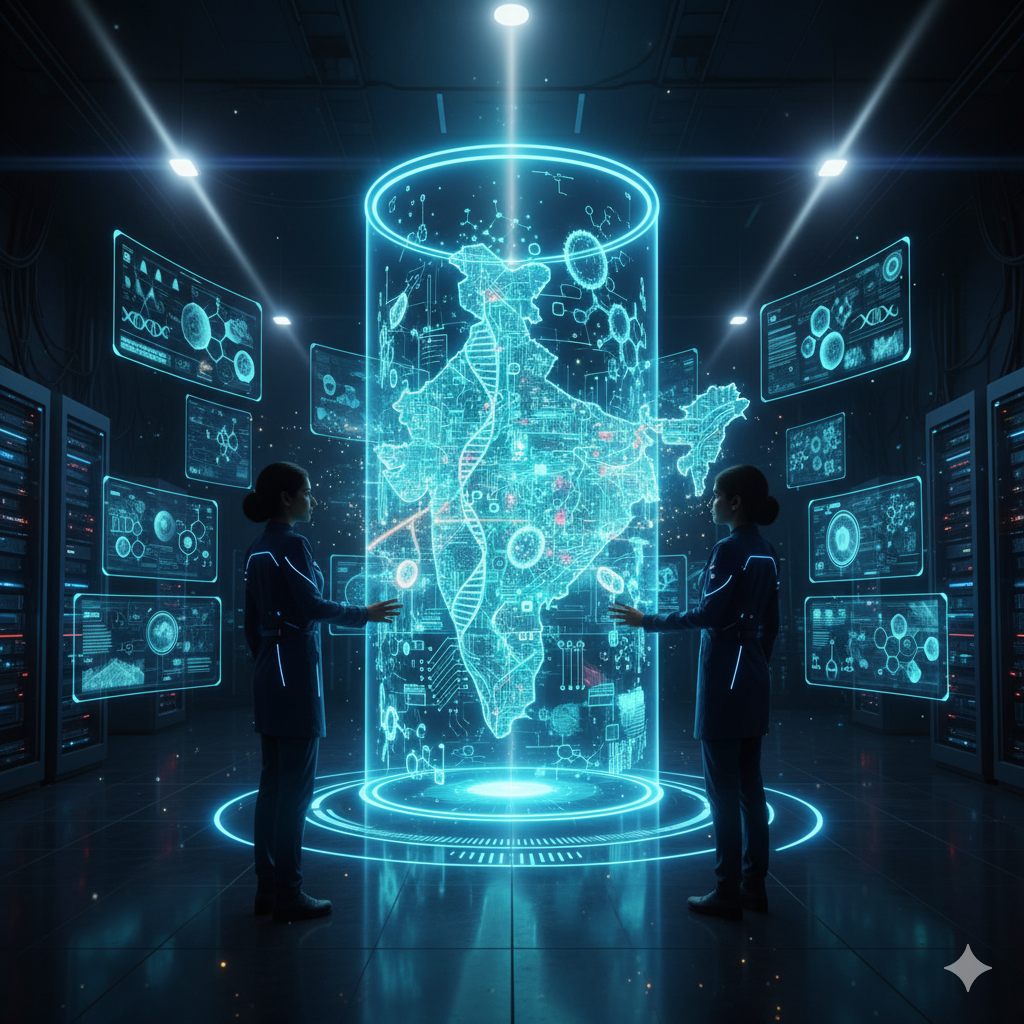Introduction
As the demand for faster, more efficient computing continues to rise, the limitations of traditional electronic computing have become increasingly apparent. Issues such as heat generation, energy consumption, and processing speed are pushing researchers to explore alternative methods of computation. One of the most promising and futuristic solutions is Optical Computing—a technology that uses light, instead of electricity, to perform calculations and transmit data.
Optical computing has the potential to revolutionize how computers process information, offering unprecedented speed, efficiency, and bandwidth. This article explores the fundamentals, working principles, benefits, challenges, and future prospects of optical computing, providing an in-depth educational overview.
What is Optical Computing?
Optical computing (also known as photonic computing) refers to a computing paradigm where data is represented, transmitted, and processed using light—typically lasers or photons—instead of traditional electrons. Light travels at the fastest possible speed in nature and can be multiplexed in a variety of ways, which makes it ideal for high-speed data transmission and computation.
While current computers rely on electrical signals through semiconductor components like transistors, optical computing seeks to replace these elements with photonic components such as lasers, beam splitters, waveguides, and photodetectors.
Key Components of Optical Computers
- Light Source (Laser Diodes): Provide coherent light beams necessary for processing signals.
- Waveguides: Act like wires for photons, directing light between components.
- Modulators: Encode information onto light waves.
- Photodetectors: Convert light signals back into electrical signals for output or interfacing with traditional components.
- Beam Splitters and Interferometers: Used to manipulate light paths and perform logical or arithmetic operations.
- Optical Memory: Stores data using light-sensitive materials or holographic techniques.
How Does Optical Computing Work?
Optical computing performs calculations using the properties of light, such as:
- Amplitude: Strength of the light wave.
- Phase: Timing of the wave’s oscillation.
- Polarization: Direction of the wave’s vibration.
- Wavelength: Frequency or color of light.
By manipulating these properties, optical systems can perform logic operations such as AND, OR, NOT—similar to electronic gates in traditional CPUs.
Basic Working Process:
- Data Input: Information is encoded onto a light beam using modulators.
- Data Processing: Light travels through a series of optical components where interference, diffraction, and other phenomena manipulate the light to perform computations.
- Data Output: Processed data is detected by photodetectors and converted into usable output.
Advantages of Optical Computing
1. Speed
Light travels faster than electricity. This means optical computing has the potential to perform operations at the speed of light, reducing latency and increasing processing speed significantly.
2. Parallelism
Multiple wavelengths of light (colors) can be used simultaneously to carry different data streams, enabling massive parallel data processing, unlike traditional serial computing.
3. Energy Efficiency
Optical systems generate significantly less heat and require less energy to transmit data compared to electronic circuits, making them more sustainable.
4. Higher Bandwidth
Photonic systems can carry far more data per unit of time, which is particularly useful in applications requiring ultra-high throughput, such as large-scale simulations and machine learning.
5. Electromagnetic Immunity
Unlike electrical signals, light is immune to electromagnetic interference, making optical systems more reliable in sensitive environments.
Challenges and Limitations
1. Integration with Existing Systems
Current computing infrastructure is built on electronic components. Integrating optical components into these systems requires hybrid designs, which can be complex and expensive.
2. Material Constraints
Developing materials that can effectively manipulate and store light is still a major scientific challenge.
3. Lack of Optical Memory
While optical data transfer and processing are advancing, optical memory is still underdeveloped compared to electronic RAM and storage.
4. Miniaturization Issues
Light components are generally larger than electronic transistors. Achieving the same scale of integration is difficult due to the diffraction limit of light.
5. Cost
Fabrication of optical circuits and components is still more costly than traditional electronic chips, although prices are expected to fall with technological advancement.
Applications of Optical Computing
1. High-Speed Data Processing
Optical computers could be used in research institutions and supercomputing environments to perform massive calculations rapidly.
2. Telecommunications
Photonics already plays a key role in data transmission through fiber optics. Optical computing can enhance this by allowing end-to-end optical signal processing.
3. Artificial Intelligence
AI and machine learning models require vast amounts of data to be processed simultaneously. Optical chips can accelerate training and inference of neural networks.
4. Medical Imaging and Diagnostics
High-resolution imaging technologies can benefit from optical processors, improving image reconstruction and data analysis speeds.
5. Cryptography and Secure Communications
The speed and complexity of optical processing make it ideal for encryption and secure data transmission.
6. Real-Time Signal Processing
Applications like radar, sonar, and high-frequency trading systems require minimal latency, which optical computing can deliver.
Recent Advances in Optical Computing
- Lightmatter and Lightelligence, startups from MIT, have developed photonic processors for AI workloads.
- Researchers at Caltech and Stanford University have demonstrated optical neural networks that process information using light interference.
- Optalysys, a UK-based company, is working on optical co-processors capable of performing complex mathematics for deep learning applications.
These developments indicate that optical computing is moving from theoretical concepts to practical, albeit niche, implementations.
Comparison: Optical Computing vs Electronic Computing
| Feature | Optical Computing | Electronic Computing |
|---|---|---|
| Signal Carrier | Photons (light) | Electrons |
| Speed | Very High (speed of light) | High but slower than light |
| Energy Efficiency | High | Lower (heat loss is high) |
| Data Transmission | Parallel (multiple wavelengths) | Mostly Serial |
| Integration Level | Currently Low | Very High (billions of transistors) |
| Heat Generation | Minimal | Significant |
| Maturity | Emerging | Fully Developed |
Future Prospects
The future of optical computing is promising, especially as traditional Moore’s Law scaling begins to plateau. Here are a few anticipated developments:
1. Photonic Integrated Circuits (PICs)
These circuits aim to perform all computing functions on an optical chip, similar to today’s integrated circuits but using light instead of electricity.
2. Quantum Optical Computing
Combining quantum computing with photonics could lead to quantum optical computers capable of solving currently unsolvable problems.
3. Hybrid Architectures
In the foreseeable future, hybrid systems that combine optical and electronic components may dominate high-performance computing, leveraging the best of both worlds.
4. Consumer-Level Applications
As fabrication costs decrease, optical components may find their way into consumer devices, improving speed and battery life.
Conclusion
Optical computing represents a bold and revolutionary shift in how information may be processed in the future. While still in its developmental stages, it holds the potential to surpass the capabilities of electronic computing in speed, efficiency, and scalability. Its success depends on overcoming current technical and economic challenges, but the ongoing research and innovation are promising.
As the world continues to generate and rely on vast amounts of data, optical computing may well become the cornerstone of next-generation information technology, transforming everything from AI to healthcare, telecommunications, and beyond.
Summary Points
Future prospects involve hybrid systems, quantum optics, and broader adoption.
Optical computing uses light instead of electricity for data processing.
It offers ultra-fast speed, high energy efficiency, and parallel processing capabilities.
Key components include lasers, waveguides, modulators, and photodetectors.
Applications range from AI and healthcare to telecommunications and encryption.
Challenges include integration, optical memory limitations, and fabrication costs.




